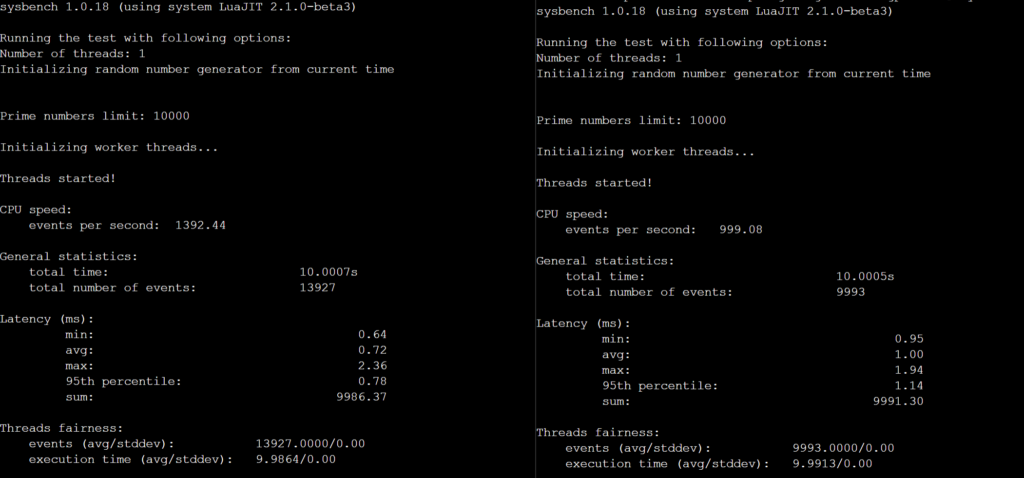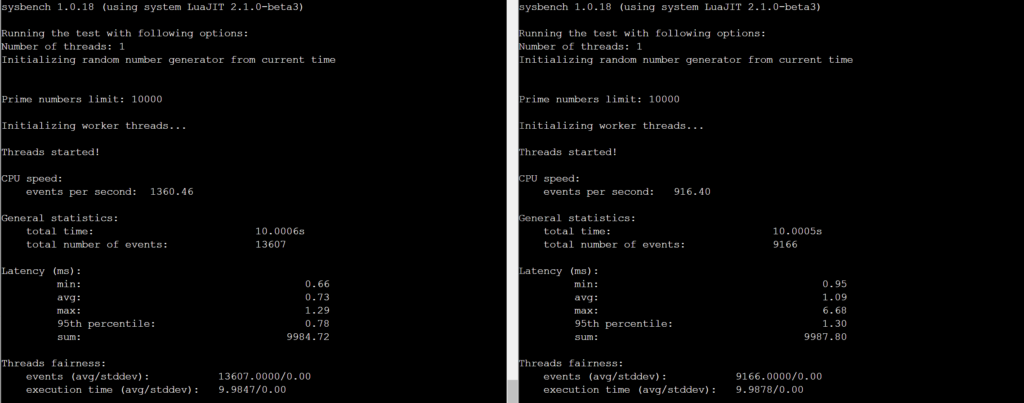In this article, we are trying to find the difference between the Digital Ocean 1 core regular droplet and the 1 core premium intel droplet. They are priced nearly similar with only a slight difference. Yet, is there a difference in performance worth paying such a premium? Let’s find out in the following article.
Exact CPU models
Digital Ocean does not reveal the exact models of the CPUs that they use for their droplets.
Getting CPU specification in Linux
You can use the following command to display your CPU information
lscpu
By running the above command, you get the following output. The left side is the Regular droplet and the right side is the premium intel droplet.

According to these details, it is clear that the Regular droplet uses an AMD CPU, and the premium Intel uses an Intel CPU. The console displays the logical model names instead of the physical core model names.
The clock speed of the premium droplet’s CPU is a bit higher (2949mhz) compared to the clock speed of the regular droplet’s CPU (1996mhz).
The cache memory sizes are different in both CPUs as well
The following intel CPUs got the same cache specifications
- Intel Xeon Gold 6238R
- Intel Xeon Gold 6248R
According to this Digital Ocean article, they are using second-generation Intel Xeon Scalable processors. Therefore, the CPUs you get for premium intel droplets could be virtualized logical cores of one of the above CPUs. However, there is no certain way of knowing this
Benchmarking
It is possible to benchmark using the sysbench tool.
You can install sysbench using the following command
sudo apt install sysbench
To run a benchmark test, use the following command
sysbench cpu run
As usual, the left side shows the results of the regular droplet and the right side shows the results of the premium intel droplet.



We ran the benchmark 3 times and the regular droplet scored higher each time. It is unclear how these CPUs handle real server workloads, yet the regular droplet seems to be the winner for the sysbench benchmarks.



Leave a Reply